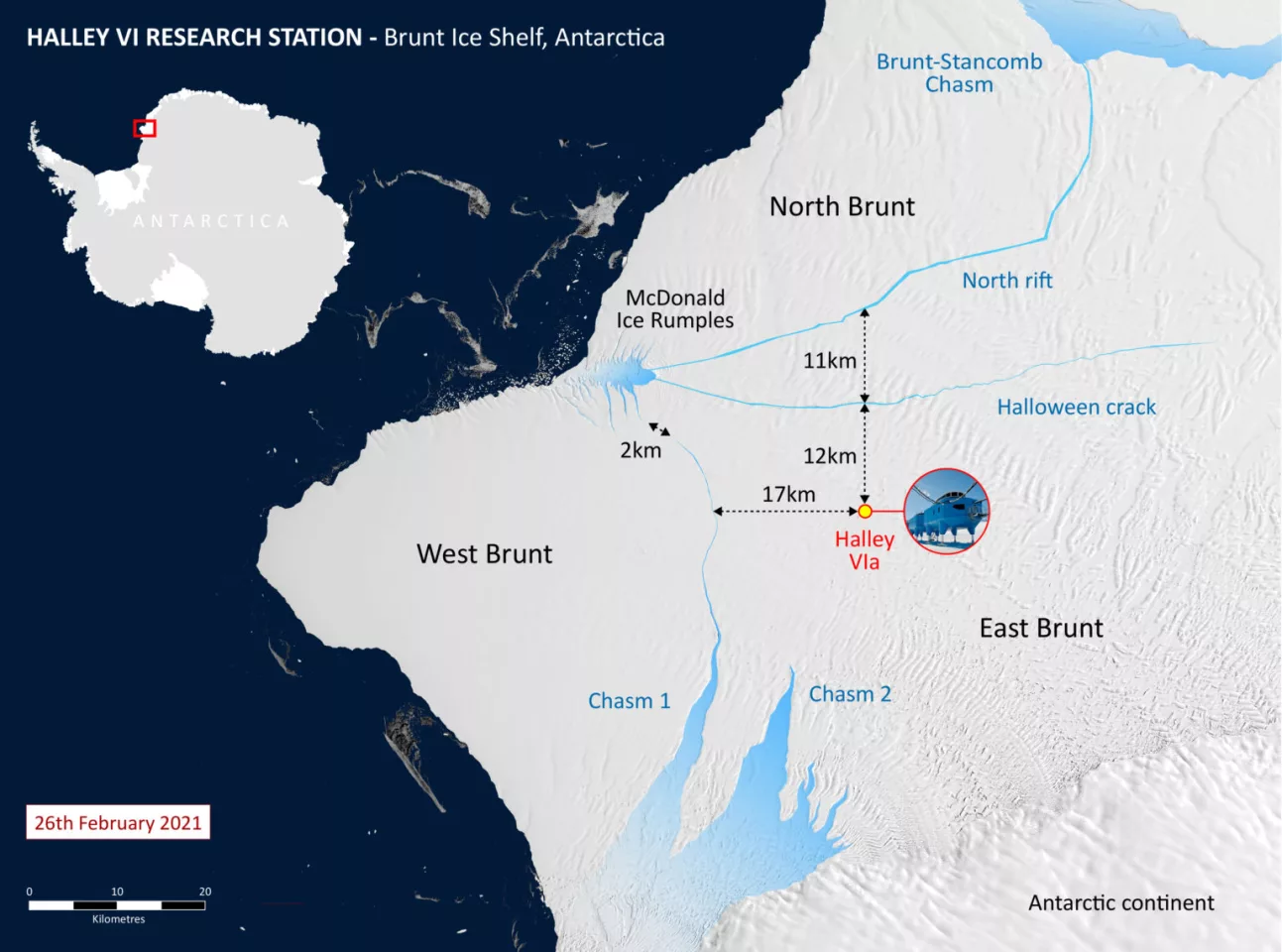After years of suspense, an iceberg approximately the size of London has broken away from the Brunt Ice Shelf in Antarctica, only a few miles from the Halley British Antarctic Survey (BAS) ice station. The 490 square mile (1,270 sq km), 490 feet (150 m) thick sheet of ice is not seen as posing a direct threat to the station.
Though the calving of the giant iceberg was dramatic, it wasn't unexpected. Cracks have been appearing in the Brunt Ice Shelf for years, but the movements of ice is complex and often unpredictable, so the BAS has been keeping a close eye on developments and erring on the side of caution.
Over the past decade, two new cracks, Chasm 1 and Halloween Crack, have appeared in the ice shelf. The new calving event was raised as a concern in November 2020 when a third chasm called North Rift appeared and was moving toad another crack near the Stancomb-Wills Glacier Tongue 22 miles (35 km) away.
In January, the North Rift was splitting the ice at a rate of over 3,000 feet per day and widening by hundreds of feet in a matter of hours. On February 26, 2021, the new berg broke free of the ice shelf.

Since these cracks are so close to the Halley Research Station, precautions were taken. The brightly colored modular buildings that make up the station sit on telescopic posts ending in skis. In 2016, these were hooked together and towed by tractor 20 miles (32 km) inland.
In addition, the decision was taken to abandon the station over the Antarctic winters when rescue operations would be difficult and often impossible due to darkness and ice storms. The skeleton crew that was at Halley were evacuated by BAS Twin Otter aircraft a few weeks ago.
“Our teams at BAS have been prepared for the calving of an iceberg from the Brunt Ice Shelf for years, says Professor Dame Jane Francis, Director of the British Antarctic Survey . "We monitor the ice shelf daily using an automated network of high-precision GPS instruments that surround the station, these measure how the ice shelf is deforming and moving. We also use satellite images from ESA, NASA and the German satellite TerraSAR-X. All the data are sent back to Cambridge for analysis, so we know what’s happening even in the Antarctic winter, when there are no staff on the station, it’s pitch black, and the temperature falls below minus 58° F (minus 50° C).
"Over coming weeks or months, the iceberg may move away; or it could run aground and remain close to Brunt Ice Shelf. Halley Station is located inland of all the active chasms, on the part of the ice shelf that remains connected to the continent. Our network of GPS instruments will give us early warning if the calving of this iceberg causes changes in the ice around our station."
The video below shows the North Rift before breaking free.
Source: BAS






